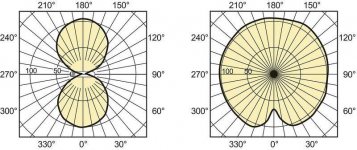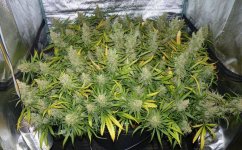what about using a 120 volt to 240 volt converter. Ive seen them online at a very reasonable price. Will they work for these 240volt ballasts or will they damage them ?
I went this route first because I really didn't feel like crawling into the attic to wire a 240volt line. I purchased the top of the line 5000W Capacity 120v-240v Step up Converter with a Voltage regulator so I knew it wouldn't have any issues. Box came and it plugged right in.
Pro's- Easy Plug'n'Play to get light working in us
Cons:
Converter is HUGE and takes up space
Converter gets HOT actually increase my ambient room temp 10 degree's causing my tents to increase by about 15 and made my water chiller work extra hard to keep it down.
Converter smells and is a fire hazard
Cost for one is about 200 bucks to power only 1 Gavita at 1150W. So your looking at about 750 easy to get 1 light going.
In the end I called up the company and got refunded cause the heat and smells. Went to Lowes dropped 85.00 bucks on some wire and outlet accessories and did an attic climb.
1 hour later I had 4 240v Outlets in my room with a 30amp fuse at the other end so I'm now good to have 4 of these bad boys if I want with no fire hazard. Also reduced room temps to normal levels and everything. One of these inside a 4x4 tent at 1150 watts lights on is 78-88 F. Not bad at all for no glass.
Oh ya no previous electrical experience either just a simple engineering student using this lovely thread
www.icmag.com/ic/showthread.php?t=117867 Specifically Page 2
I like them so much I ordered 2 more to place between my 6 EVO 90 LED's in my 4x8 tent =)



 whatzzup or anyone who's used the Gavita 1000. I'm building an 11x11x7.5' sealed room within a room running a 3 burner NG CO2 generator, 70 pt. dehumidifier, a 36,000 BTU mini split & would like to run 4 of the Pro 1000s. It gets into the 100s in the summer but it's a fairly dry climate. Do you think heat will be a problem? How many BTUs would you add to calculate for the light/ballasts? My guess is around 4000 but this is costing way too much to guess!
whatzzup or anyone who's used the Gavita 1000. I'm building an 11x11x7.5' sealed room within a room running a 3 burner NG CO2 generator, 70 pt. dehumidifier, a 36,000 BTU mini split & would like to run 4 of the Pro 1000s. It gets into the 100s in the summer but it's a fairly dry climate. Do you think heat will be a problem? How many BTUs would you add to calculate for the light/ballasts? My guess is around 4000 but this is costing way too much to guess!
